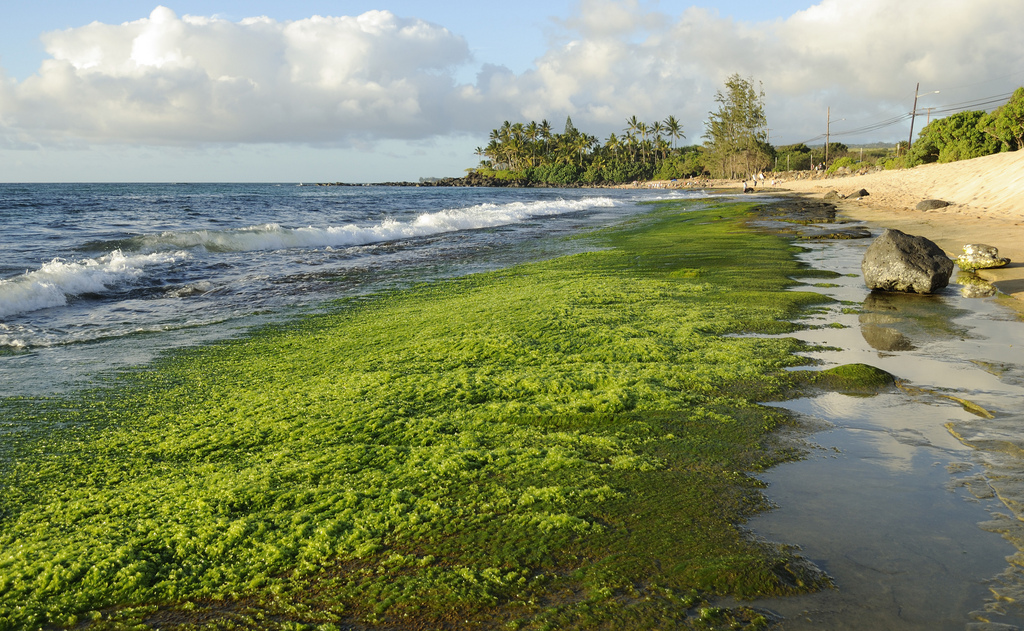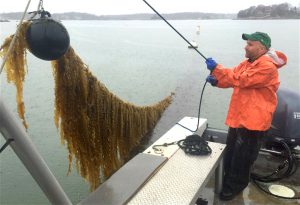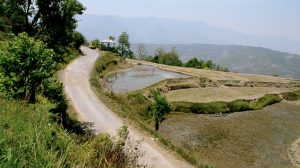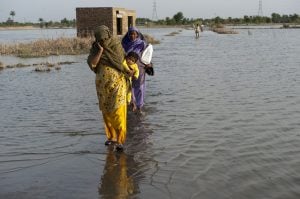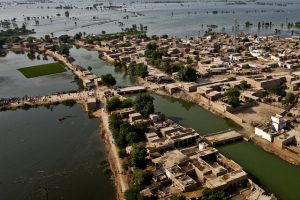If residents of Toledo, Ohio, in the midwestern United States, needed reminding of the power of even the smallest organism to bring their modern lives to a standstill it came this Summer, when single-celled algae – albeit in their billions – colonised Lake Erie.
As many as 500,000 people were warned not to drink tapwater after dangerous levels of the toxin microcystin, caused by a bloom of cyanobacteria, or blue-green algae, were found in water from two of the lake’s treatment plants.
It is a recurring problem in the area. Erie experienced its greatest algal bloom in 2011, when cyanobacteria covered roughly a fifth of the 25,000-square kilometre lake.
While algae are present in water in low concentrations and algal blooms occur naturally, their number, size and potential toxicity is increasing as a result of human impacts on the environment, with climate change and fluctuating weather patterns seen as key factors in their size and spread.
Blooms can occur in both fresh and sea water and even when not toxic can have significant harmful effects. Proliferating shrouds of algae create “dead zones” – blocking out sunlight and leeching oxygen from water – in which subaquatic life cannot survive. More oxygen is consumed by bacteria when the mass of algae dies and begins to decay.
“Globally there exist strong indications that harmful algal blooms are increasing in intensity, frequency and distribution,” says professor Gustaaf Hallegraeff, of the Institute for Marine and Antarctic Studies in Australia.
“A major reason for this is increased scientific awareness and hence increased monitoring and regulation. In some countries such as China, eutrophication and increased utilisation of coastal waters for aquaculture are likely to be a major driving force for algal blooms.”
China suffered its largest recorded algal event in July last year, when a bloom of non-toxic Ulva prolifera algae swelled to cover almost 30,000-square kilometres of the Yellow Sea off Qingdao, eastern China. Tourism, fishing industries, property markets, local economies were all affected – the impact of algal blooms extends far beyond the water.
Experts suggest that a boom in seaweed farming since 2005 is to blame for what has become a yearly occurrence in Shandong and Jiangsu provinces. They believe the fast-growing algae, which develop on rafts used to grow seaweed, is being removed by farmers and accreting in open water.
Will climate change make algae blooms worse?
From Chile to the Philippines, algal blooms are a problem for practically every country with a coastline, however, and a new report set to be published in the scientific journal Plos One suggests our changing climate will only make things worse.
Increasing concentrations of atmospheric carbon dioxide are effectively “one big fertilisation experiment at an unprecendented large scale”, according to Jef Huisman, one of the authors of the report. “An enhanced CO2 influx into aquatic systems … will intensify algal blooms in nutrient-rich waters across the globe. Water managers and policymakers will have to prepare for a deterioration of the water quality due to climate change.”
Changing weather patterns have other effects too, with more powerful storms and unseasonally heavy rainfall releasing large amounts of heavily-fertilised agricultural topsoil into waterways. Once there, the phosphorus and nitrogen in the fertiliser do exactly what they do on land: encourage plant growth. Nutrient-rich runoff from land owned by the 70,000 farmers around Lake Erie is currently seen as the most likely trigger for the Toledo bloom, with intensive livestock farming causing further soil erosion and exacerbating the issue.
Moreover, phosphorus is retained in the earth, meaning any measures taken to restrict fertiliser use will not immediately deal with the problem of algal bloom. Even with a total ban on fertilisers the effects on areas affected by algal bloom can last for several years.
Solutions to the problems around fertiliser runoff include keeping animals away from waterways; moving them regularly to prevent soil erosion in pastureland; and creating perimeters of trees around agricultural land to soak up nutrients and filter out sediment from runoff.
At sea, harmful algal blooms (HABs) have the capacity to affect the entire food chain. Toxic single-celled microalgae or phytoplankton such as the Karenia brevis and Alexandrium fundyense are ingested by smaller species and can go on to kill the fish, birds and marine mammals that prey upon them. Contaminated shellfish can also cause paralysis and death in humans; filter feeders such as oysters and mussels absorb toxins more rapidly. 276 manatees were killed in Florida after consuming sea grass coated in toxins from a HAB.
The pigmentation of these phytoplankton – known as dinoflagellates – varies, but so-called “red tides” have become an increasing problem in the Persian Gulf. Authorities in the United Arab Emirates have created artifical reefs in an attempt to revive an ocean environment depleted by several HABs in recent years. Their proliferation in the UAE and increasing toxicity has been blamed on rapid urbanisation and industrialisation, with runoff and pollution from unprecedented coastal development upsetting delicate marine ecosystems.
Heavy sea traffic can also be an issue in introducing and spreading invasive species of algae, through water and sediment collected in and discharged from ballast tanks. “In Australia, we are newly discovering problems in areas where they were not known before: some of them have been associated with ship ballast water introductions but others appear to be climate driven range extensions,” says Hallegraeff.
In 1994, after a “black tide”, 1,500 tonnes of fish and 60 tonnes of rock lobster washed up on the shores of St Helena Bay in western South Africa. Originally a red tide of the dinoflagellates Ceratium furca and Prorocentrum micans, the vast bloom robbed the water of dissolved oxygen to such an extent that anaerobic bacteria began generating hydrogen sulphide, which turned the sea black.
And just as climate change is generating more of the carbon dioxide algal blooms need to grow, so too is it warming up bodies of water to temperatures at which algae, including toxic cyanobacteria, thrive. Algae bulk up and grow more rapidly in warm water, which also helps it float more quickly to the surface. Once there it absorbs sunlight and warms water still further.
Professor Kevin Flynn, from the Centre for Aquatic Research at Swansea University, is researching models of algal growth, and of the plankton that feed on them, to help understand how to control algal blooms.
“[They are] a complex consequence of increased nutrient load – from expanding agriculture – changes in rainfall patterns and temperature increases,” he says, warning that we must be prepared for algal blooms to become more prevalent with the expansion of human activity on the environment.
